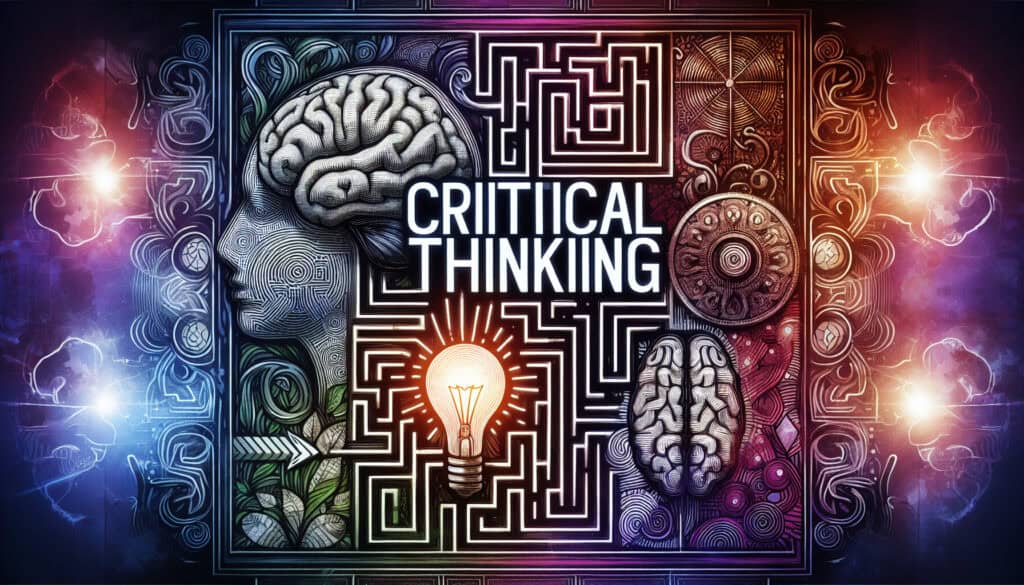The objective analysis and evaluation of an issue in order to form a judgment.
- Méthodologies : Lean Sigma, Fabrication
Critical Thinking

Critical Thinking
- Analyse de la variance (ANOVA), Amélioration continue, Techniques de résolution de problèmes, Gestion de la qualité, Gestion des risques
Objectif :
Comment il est utilisé :
- It is a disciplined process of actively and skillfully conceptualizing, applying, analyzing, synthesizing, and/or evaluating information gathered from observation, experience, or reflection.
Avantages
- Leads to more rational and well-informed decisions; helps to identify logical fallacies and préjugés; promotes clear communication and problem-solving.
Inconvénients
- Requires conscious effort, skill, and practice; can be slower than intuitive decision-making; may be perceived as overly negative or critical if not applied constructively.
Catégories :
- Ingénierie, Résolution de problèmes, Gestion de projet
Idéal pour :
- Evaluating information, arguments, and potential solutions in a logical and unbiased way to make better decisions.
In product design and innovation, the application of critical thinking is often seen during the ideation and evaluation phases where teams are tasked with generating ideas and assessing their feasibility. This methodology is widely utilized in industries such as technology, consumer goods, healthcare, and engineering, where complex problem-solving and decision-making are prevalent. Participants may include cross-functional teams composed of designers, engineers, marketers, and project managers, who collectively assess and refine concepts through structured discussions and debates. For example, in developing a new dispositif médical, critical thinking can be employed to evaluate the implications of various design choices on usability and regulation compliance. Techniques like SWOT analysis or root cause analysis can further support these discussions by identifying strengths, weaknesses, opportunities, and threats associated with each idea. By maintaining a focus on logical reasoning and objective evaluation, teams can pinpoint biases or misconceptions that exist in their assumptions, leading to more informed and robust solutions. The methodology not only enhances collaboration and communication among diverse stakeholders but also contributes to a culture of continuous improvement, as participants learn to question their own and others’ viewpoints while exploring innovative approaches and technologies. In project management contexts, clear documentation of reasoning processes can facilitate iterative design refinements and enable teams to track the evolution of ideas and decisions.
Principales étapes de cette méthodologie
- Define the problem or question clearly.
- Gather relevant information from various sources.
- Analyze the information for validity and reliability.
- Identify assumptions and biases influencing the perspective.
- Develop and consider multiple solutions or arguments.
- Evaluate the strengths and weaknesses of each solution.
- Make a decision based on logical reasoning and evidence.
- Reflect on the decision-making process and outcomes.
Conseils de pro
- Continuously question and dissect underlying assumptions in existing designs or ideas to uncover hidden limitations or biases.
- Utilize structured frameworks like the Socratic method, enabling deeper discussions that reveal potential flaws in reasoning and promote alternative viewpoints.
- Engage in interdisciplinary collaboration to challenge conventional wisdom, enhancing the depth of analysis and expanding the range of potential solutions.
Lire et comparer plusieurs méthodologies, nous recommandons le
> Référentiel méthodologique étendu <
ainsi que plus de 400 autres méthodologies.
Vos commentaires sur cette méthodologie ou des informations supplémentaires sont les bienvenus sur le site web de la Commission européenne. section des commentaires ci-dessous ↓ , ainsi que toute idée ou lien en rapport avec l'ingénierie.
Contexte historique
1960
1980
1983
1990
1995
2000
2010
1950
1980
1980
1986
1994
1995
2000
(si la date est inconnue ou n'est pas pertinente, par exemple "mécanique des fluides", une estimation arrondie de son émergence notable est fournie)














Articles Similaires
Calculateur de METS en calories
Méta-analyse
Cartographie des messages
Diagrammes du modèle mental
Forces de poussée et de traction maximales acceptables
Planification des besoins en matériaux (MRP)